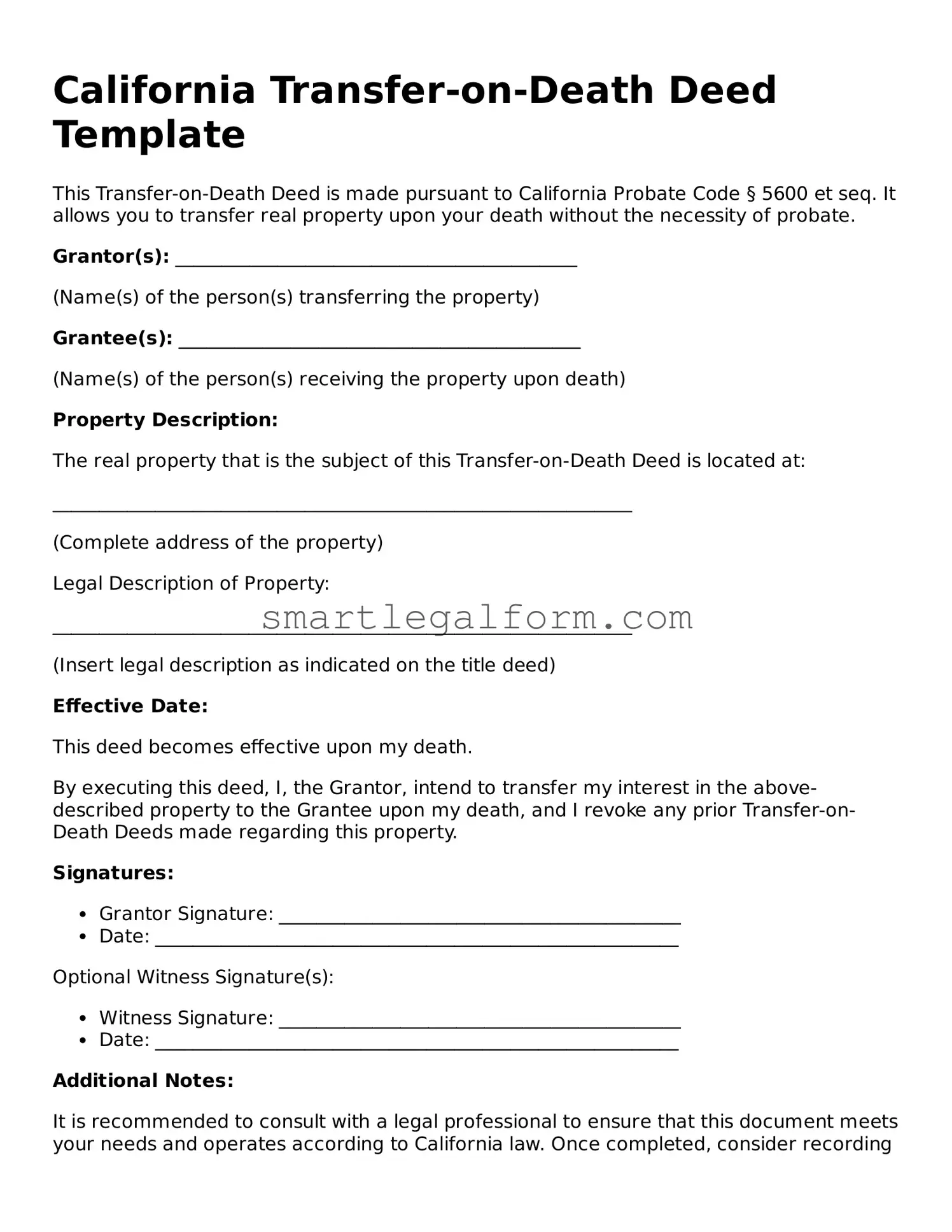California Transfer-on-Death Deed Template
This Transfer-on-Death Deed is made pursuant to California Probate Code § 5600 et seq. It allows you to transfer real property upon your death without the necessity of probate.
Grantor(s): ___________________________________________
(Name(s) of the person(s) transferring the property)
Grantee(s): ___________________________________________
(Name(s) of the person(s) receiving the property upon death)
Property Description:
The real property that is the subject of this Transfer-on-Death Deed is located at:
______________________________________________________________
(Complete address of the property)
Legal Description of Property:
______________________________________________________________
(Insert legal description as indicated on the title deed)
Effective Date:
This deed becomes effective upon my death.
By executing this deed, I, the Grantor, intend to transfer my interest in the above-described property to the Grantee upon my death, and I revoke any prior Transfer-on-Death Deeds made regarding this property.
Signatures:
- Grantor Signature: ___________________________________________
- Date: ________________________________________________________
Optional Witness Signature(s):
- Witness Signature: ___________________________________________
- Date: ________________________________________________________
Additional Notes:
It is recommended to consult with a legal professional to ensure that this document meets your needs and operates according to California law. Once completed, consider recording the deed with the county recorder's office to provide public notice of the transfer intention.
